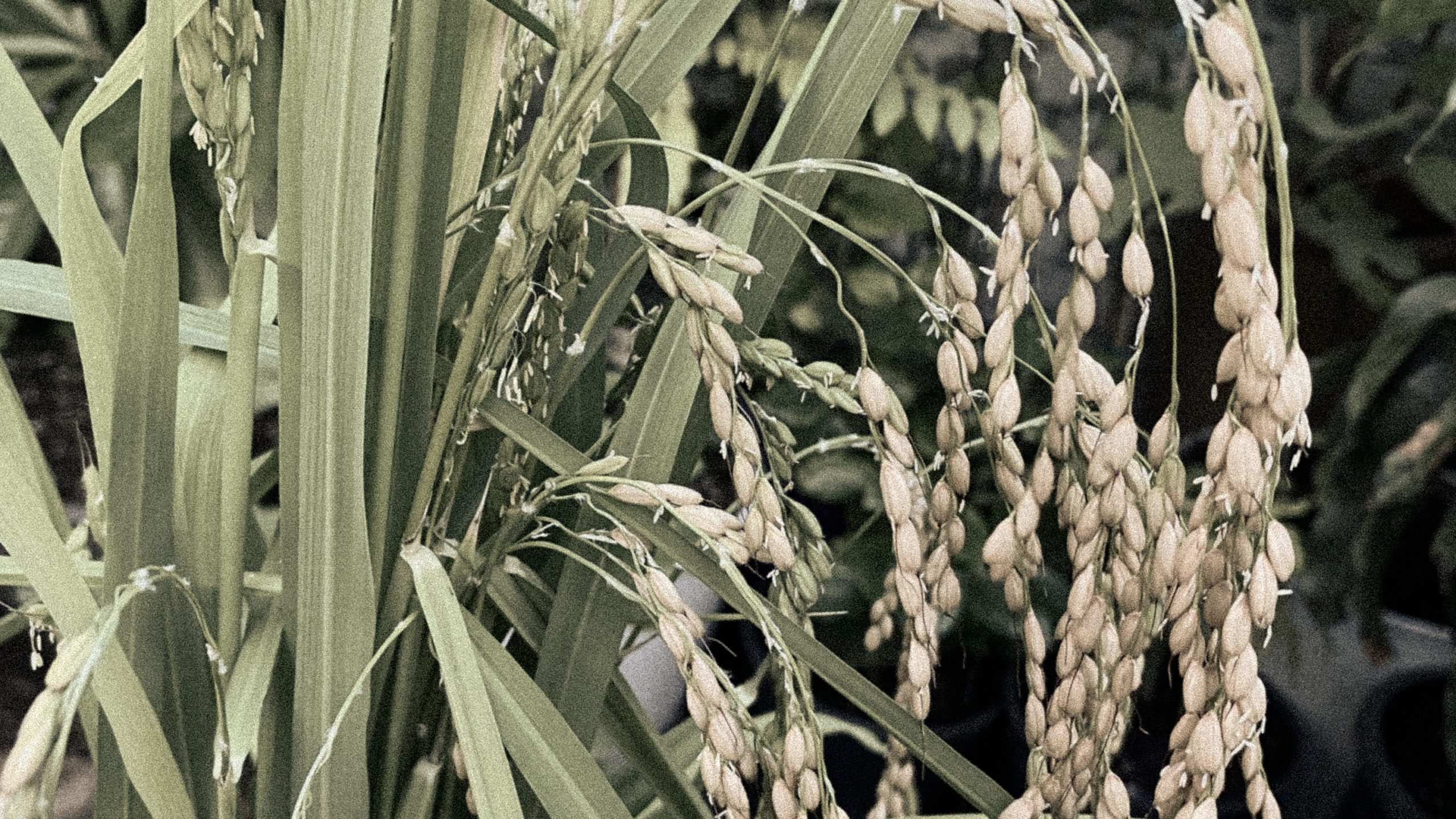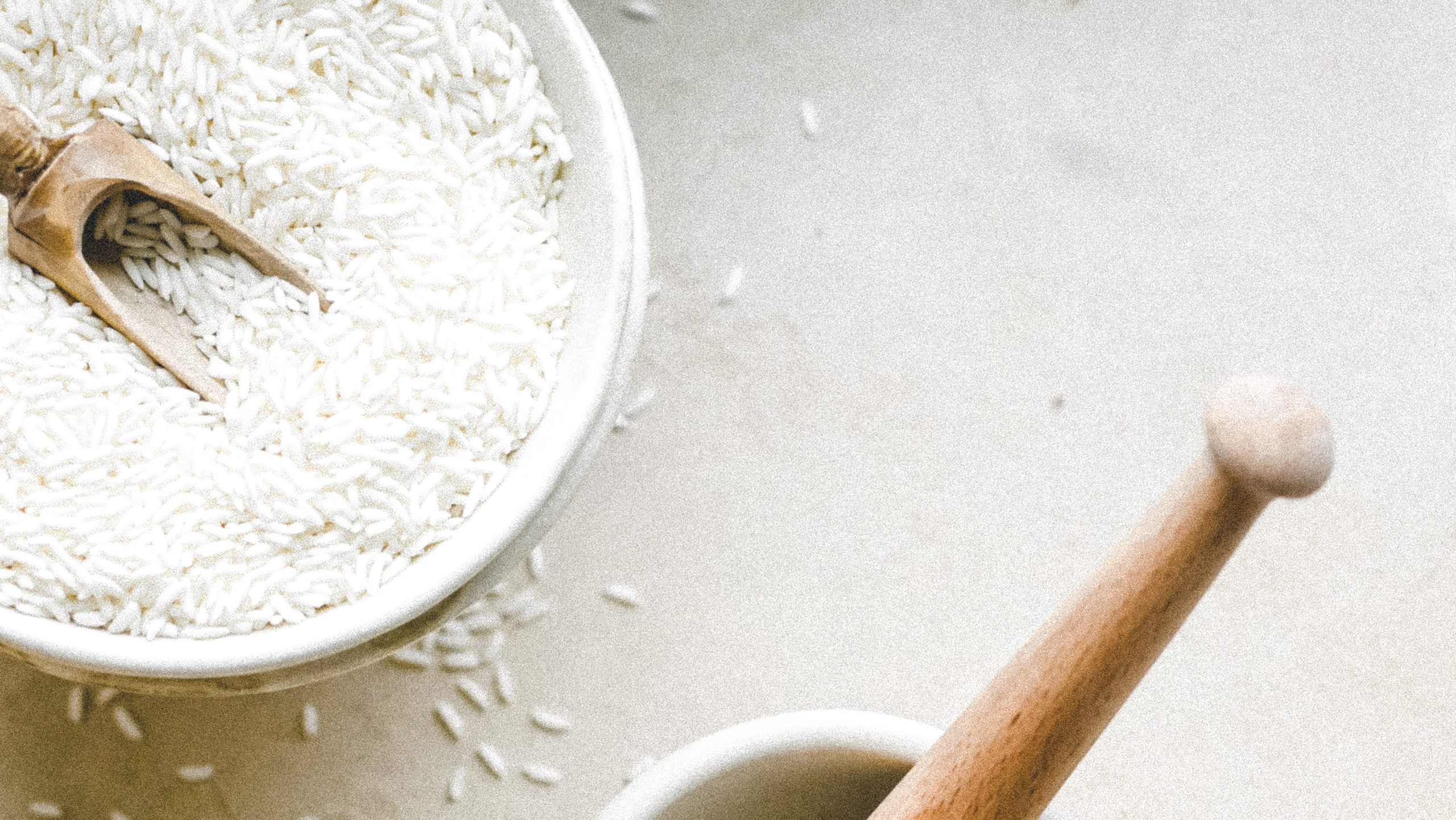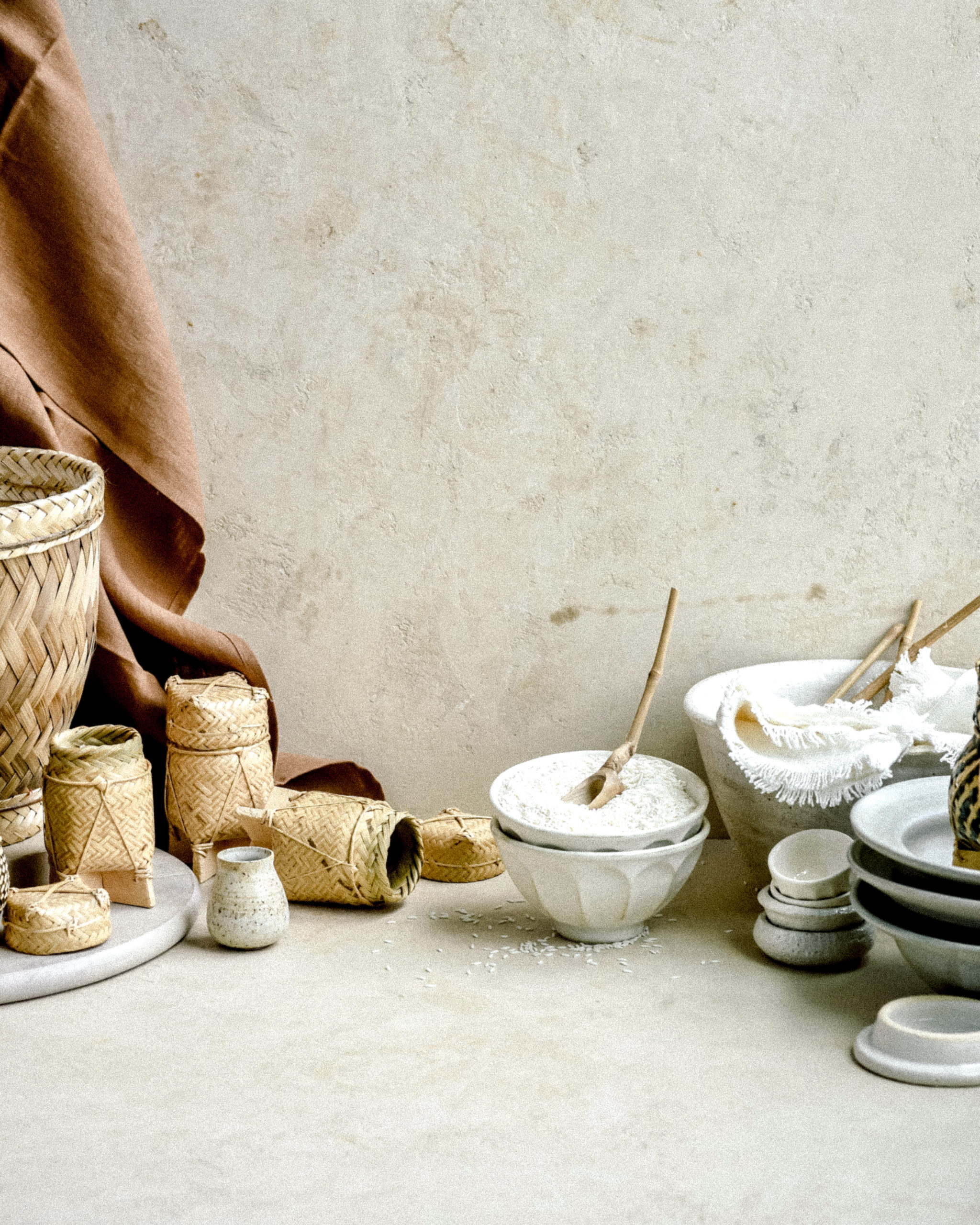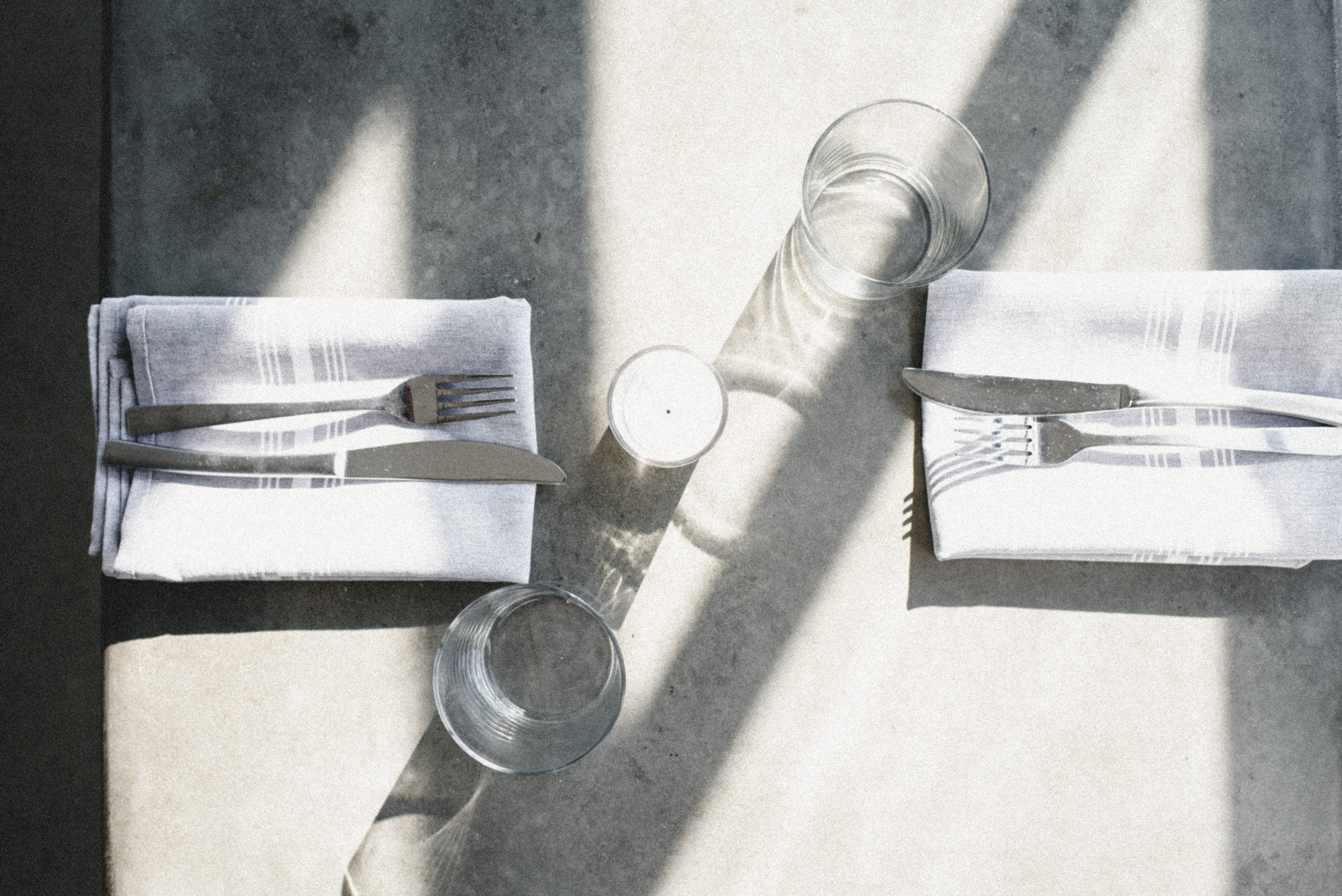Lao Sticky Rice 101: How to Make Khao Neow by Annee Lund
ABOUT STICKY RICE:
Did you know that Lao people are called the “children of sticky rice”? In Annee Lund’s family they say, “We stick together like sticky rice.”
Fun fact: This type of rice is also known as sweet rice or glutinous rice, and in Laos, translates to: “khao neow”. And despite its misleading name, “glutinous” rice is actually gluten-free!
According to Beyond Celeriac: “The ‘glutinous’ term refers to the sticky nature of the rice and not the gluten protein found in wheat, barley and rye. Rice is one of the most popular gluten-free grains for people with celiac disease.”


Lao Sticky Rice 101: How to Make Khao Neow by Annee Lund
Materials for Sticky Rice (Khao Neow):
- Sticky Rice (preferably Golden Camel brand, but rice like this brand works too!)
- Rice Basket
- Bamboo Rice Steamer
- Lid for the Rice Basket (any handled lid from another large pot will do)
- Large Bowl
- Wooden Rice Paddle
* These are not the only tools to cook sticky rice, but they are the most authentic tools that work best and provide the tastiest results!
INSTRUCTIONS:
- Measure the amount of rice you want to cook then put the rice in a large bowl. (You can also read instructions on the back to help decide how much rice you need to cook. Though, 2 cups of sweet rice and 4 cups of water is a good place to start! Soaking the rice helps break down the tough outer shell of the rice. Skipping this step may lead to chewy semi-cooked rice, which is less than ideal.)
- Next, rinse the rice until the water runs clear and not a milky white.
- Cover all of the rice with cold water and allow it to soak for 6-24 hours, or overnight.
- When ready, drain and rinse the rice.
- Transfer the uncooked rice into a bamboo basket steamer. (The basket steamer is CRUCIAL!)
- Add water to the pot on the base of the steamer, about an inch and a half (5-6 cups).
- Place the basket with the rice on top of the base of the steamer. Make sure the bottom of the basket is not touching the water, otherwise it will turn the basket soggy.
- Cover the rice basket with a lid. Cook for about 15 minutes on medium heat. (You will see the rice shift in color from an opaque white to an almost clear, glossy color.) Next, at this point, remove the lid, bring the basket to the counter, holding both sides of the basket, then bend the rice basket and flip the rice over (like an omelet in a skillet).
- Return the basket to the pot, add the lid back on, and cook for an additional 10 minutes.
- Once the rice is cooked, put the rice in a bamboo rice platter by bending the basket to loosen the rice from the sides.
- Use a wooden rice spoon paddle, rinsed with water, to fluff the rice, flip the rice in on itself, and open it back up again. Repeat these steps three or four times to air the steam out of the rice. (The dampened rice paddle is to prevent the rice sticking to the paddle itself during this process.)
STORING:
There are two ways methods to store the rice once it cooks:
A: Shape all of the rice into one big ball and put it inside of a sticky rice basket.
B: Shape the rice into small serving sized portions, then cover with plastic wrap or place into Ziploc bags. Place these individual servings into a rice basket. If you choose to wrap the rice in small servings, you can refrigerate it for up to 2-3 days and microwave it for one minute to reheat.
HOW TO EAT:
Roll the rice into a bite sized ball and eat it with your favorite Lao dish or sauce. Enjoy!

Did you enjoy this guest post? For more recipe collaborations visit the Kitchen Journal for more. Also, to view Annee Lund’s interview visit the Table Talks page!




